Abstract
Introduction: Inguinal hernia is one of the most common surgical diseases, and is more unusual and significantly challenging in terms of surgical management. The aim was to study the clinical presentation, outcome of treatment, and Perioperative complications of huge inguinal repair.
Materials and Methods: The study was prospective, cohort multicenter based study, conducted during charity non-governmental missions at three hospitals in West Africa (Sierra Leone, Guinea and Liberia).
Results: A total of 103 patients of huge hernias were studied, the mean age of the study group was 46.47+/- 18.78 years. Lifting heavy weight considered the main risk factor associated with the development of hernia in 61 (59.2%) of the patients. In 65 (63.1%) of our cases, swelling reaches below the level of the knee. All patients in the study underwent hernitomy and herniorrhaphy using different repair methods, fortunately 92 (89.3%) patients had no surgical complications, and the complications were limited to hematoma in 3 cases (2.9%), wound infection in 3 cases (2.9%), Fournier’s gangrene in 4 cases (3.9%), and bowel injury in 1 case (1%). No abdominal compartment syndrome or recurrence observed during the six months follow-up period.
Conclusion: The surgical outcome was excellent without recurrence and very low perioperative complication rate.
Keywords: Huge inguinal hernia; West Africa; abdominal compartment syndrome; Darn’s repair; Bassini repair
Introduction
Hernia is a Greek word (Hernios) was known in the ancient history of mankind from its early beginning. In the early Egyptian era, Papirus of Ebers described hernia as swelling that protrude and appear while coughing. Most of the basic knowledge in hernias in the past is the heritage of the work of Galen [1]. Hernia surgical repair at the groin represent the commonest surgical operation in general surgical practice and considered at the top of main 3 operations in developed countries, in United States about 800 thousand cases of repair of inguinal hernia every year, this was considered as major issue in national health [2].
In Africa, especially in Sub-Sahara, there is a huge number of patients with non-repaired inguinal hernia, this late presentation results in giant hernia (definition is the one that extends down to the medial aspect of the middle of the thigh while the patient standing in upright position) at the inguino-scrotal region and even further worse presentation like incarceration and strangulation [3]. The prevalence in sub-Saharan Africa there is no available statistical data based on national or regional population quantitative analysis, however in Sierra Leone a 7% prevalence is reported with only 22% of the reported cases had the repair for their hernias, 20% were disable because of their hernias and 60% did not seek surgical advice because of financial insufficiency [4].
No treatment has been adopted as standard procedure for this uncommon disease and several repair techniques are suggested by published articles and case reports [5]. Complications of hernia include operative site hematoma which is the most common complication, seroma, sustained postoperative pain, numbness; infection, vascular injury; visceral injury; wound dehiscence; Fournier’s gangrene and surgical mortality [4,6,7]. The aim was to study the clinical presentation, outcome of treatment and perioperative complications of huge inguinal repair during charity non-governmental missions to West Africa (Sierra Leone, Guinea and Liberia).
Materials and Methods
The study was prospective, cohort multicenter based study, conducted in 103 patients with huge inguinal hernia (reaching the upper thigh) were submitted to hernitomy and repair using either Bassini or Darn’s (modified Bassini) repair, elective operation. Operations were done in one of the three centers Sierra Leone (Boo and Makinne Hospitals), Guinea (AIME Hospital) and Liberia (JFK Hospital) during one month of non-governmental charity mission. All patients underwent pre-operative examinations including hernia size (Figure 1) and basic laboratory investigations, and consequently received IV antibiotics (Cefazolin) at the beginning of the procedure with induction of anesthesia because complete aseptic condition is not assured in those remote underserved areas. The operation was done under spinal anesthesia, oblique incision at the inguinal crease through skin and subcutaneous tissue, the external oblique aponeurosis was incised to open the inguinal canal, the hernial sac was dissected off the inguinal cord (Figure 2), the hernial sac ligated at the level of the deep ring. The deep ring is then tightened around the surgeon little finger. The conjoined tendon was sutured to the inguinal ligament [15]. The conjoined tendon was approximated to the inguinal ligament by using continuous and very lax nylon or propylene suture materials to create a tension free manual mesh. After surgery, the patients were seen in the 3rd postoperative day then the 10th day and finally monthly for 6 months.
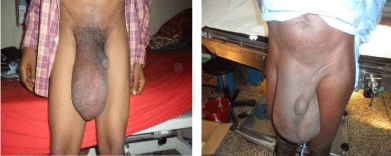
Figure 1: Preoperative right huge inguinal hernia, patient standing up.
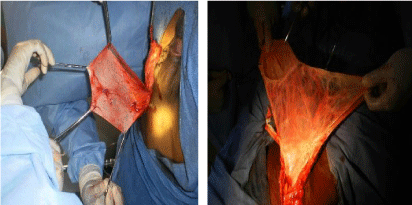
Figure 2: Intra-operative dissected huge hernial sac in large inguinal hernia.
Informed consent was obtained from each subject following the ethical approval of the protocol by the hospital and state ministry of health ethical committees in each country. Data concerning the outcome and perioperative complications results were collected using questionnaire. The frequency distribution of the quantitative and qualitative variables was calculated by using SPSS (Statistical Package for Social Science); version 20.
Results
Descriptive statistics and clinical presentation are shown in Table 1 for the 103 patients presented with huge hernias underwent inguinal hernia repair. The mean age of patients was 46.47+/- 18.78 years, the majority of the patients were from Sierra, Liberia, and Guinea (74, 20, 9 patients respectively). The main clinical presentation of hernia was swelling, which varies from swelling only in 42.7% (n=44) patients, swelling and discomfort at the site of hernia in 29.1 % (n=30) patients, and combination of swelling, pain and disability in 28.2% (n=29) patients (Table 1). Lifting heavy weight have been considered the main risk factor associated with the development of hernia in 61 patients (59.2%), followed by congenital hernias in 11 cases (10.7%) started at infancy and became huge hernia at adulthood, 4 patients (3.9%) due to lower urinary tract symptoms, and 26 patients (25.2%) without obvious risk factor (Table 2).
Frequency (n)
Percentage (%)
Age group
< 40
43
41.80%
40-59
27
26.20%
60-80
27
26.20%
>80
6
5.80%
Site of hernia
Right
47
45.60%
Left
56
54.40%
Clinical presentation
Swelling only
44
42.70%
Swelling and Pain
30
29.10%
Swelling, pain and disability
29
28.20%
Table 1: Demographic information and clinical presentation of the study cases.
Frequency (n=patients)
Percentage
Lifting heavy weight
61
59.20%
Congenital
11
10.70%
Lower urinary tract symptoms
4
3.90%
No risk factor
26
25.2
Table 4: Risk factors associated with hernia in the study cases.
We classify the patients according to the new classification [15] for huge inguinal hernia among West African patients according to the level of hernial swelling in relation to the thigh we found 17 cases (16.5%) reaching the middle of the thigh, 21 cases (20.4%) reaching the lower third of the thigh (suprapatellar line) while 65 cases (63.1%) below the level of the knee (Figure 3). All patients underwent hernitomy and herniorrhaphy with tightening of the deep ring opening in most cases, 91.3% of them repaired without mesh. In 79 patients (76.7%) the repair of the inguinal hernia by Darn’s (a modified Bassini of manual meshing), 15 patients (14.6%) with Bassini repair and 9 patients (8.7%) were repaired by open polypropylene mesh repair (Figure 4).
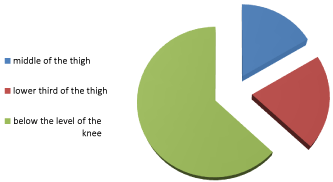
Figure 3: Classification of huge hernia.
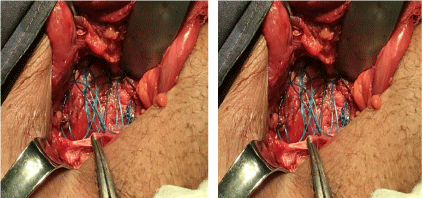
Figure 4: Intra-operative Darn’s repair (Modified Bassini).
Three patients (2.9%) had resection and anastomosis of the bowel, in these cases the bowel is resected because of friable wall after dissecting the sac, which was very adherent to the bowel and this might lead to bowel perforation after reduction of the contents (Figure 5).
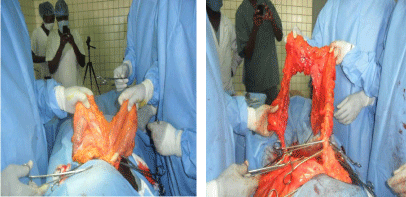
Figure 5: Intra-operative hemicolectomy.
Fortunately, 92 (89.3%) of the study cases reported no complications, while the complications were limited to hematoma in 3 patients (2.9%), wound infection in 3 cases (2.9%), Fournier’s gangrene in 4 cases (3.9%) bowel injury in 1 case (1%), abdominal compartment syndrome was zero and there was no recurrence during the follow-up period (Table 3).
No complication
Hematoma
Infection
Fournier’s gangrene
Bowel injury
Total
Upper 1/3
15
0
0
0
0
15
Middle 1/3
20
0
0
1
0
21
Lower 1/3
57
3
3
3
1
67
Total
92
3
3
4
1
103
Table 3: Size of the hernia and perioperative complications.
Discussion
The study encounters huge hernia cases in West Africa in three different countries, since the main end point of focus in the study was huge hernia in different aspects including clinical presentation, outcome of surgical treatment and perioperative complications.
One hundred and three operations were completed without serious complications. The mean age in our study was 46 years, which appeared higher than previous study done in Africa (35 years) but it is still lower than in UK (62) [3], this may be due to long standing lifting heavy weight which was found 59.2% of all risk factors in this study together with delayed repair of congenital inguinal hernia late after puberty and adulthood time, which reflected by 10.7% of total percentage of risk factors. The risk factors for inguinal hernia in adults more than 18 years varies from long standing lifting heavy weight to constipation, prostatism, smoking, chronic obstructive pulmonary disease, presence of family history, abdominal aneurysm of the aorta, following prostatectomy, patent processes vaginalis, patients with ascites, collagen disease and post dialysis of the peritoneum [7]. The increase intra-abdominal pressure presumably caused by colonic tumor and prostate cancer has been stated as possible causes for herniation. Although value of preoperative colonic evaluation are either by barium enema or colonoscopy, for patients with giant inguinal hernia remain controversial, some reports recommended preoperative colonic evaluation for patient with giant inguinal hernia who are older than 40 years. Statistics indicates that colon cancer is detected by preoperative barium enema in 1.8-2.5% of patients who are older than 40 years and have undergone inguinal hernia repair [8-10].
The main clinical presentation of hernia in this study was swelling in all patients but pain at the site of hernia is obvious was 29.1 % (n=30) patients, and combination of pain and discomfort at the site of hernia in 28.2% (n=29) patients and discomfort reported in 6.8% (n=7) patients, we made a clinical diagnosis based on inspecting the inguinal swelling with presence of cough impulse over the swelling as well as palpable cough impulse followed by palpation of the patient’s groin in the standing and the supine positions, including digital examination of the inguinal canal and no need for further diagnostic modality beyond physical examination. In earlier study, discomfort in the groin is found in 66% of patients, pain especially during sexual activity in 17% with only 7% asymptomatic. The presence of preoperative pain is related for and is a direct indicator for postoperative pain and it might give rise to postoperative pain up to six months following the repair [11].
The objected surgical treatment for huge inguinal hernia is to alleviate symptoms and improve quality of life and to prevent the surgical complications such as incarceration and strangulation. Although inguinal hernias are the most common operation in general surgery and despite the efforts of many societies working in hernias guidelines, there is no consensus on the standard therapy for hernial repair even with the introduction of mesh augmentation, in other words the consensus is to do mesh implant for reinforcement of the posterior wall but no standard way for the best procedure to do that [12]. All patients in the study underwent hernitomy and herniorrhaphy with tightening of the deep ring opening in most cases (repair of the deep ring by interrupted 2/0 polypropylene suture), and by open polypropylene mesh repair. Hernioplasty with open polypropylene mesh is considered the gold standard for repair of inguinal hernia as a new concept of tension free repair, it becomes wide spread technique and more popular for the surgeons. Giant hernia by definition is the one that extends down to the medial aspect of the middle of the thigh while the patient standing in upright position [3], but it is challenging to put implant with a huge hernia with expected adhesions of the sac to the scrotum and the spermatic cord with expected hematoma formation due to extensive adhesolysis of the tough adhesions and thence wound infection and dehiscence. In this study, only 9 cases were repaired with mesh by Lichtenstein tension free technique and the majority of cases repaired without mesh because we operated on patients in a low resourced area and in some areas even the diathermy is not available, another justification for not doing all cases of hernial repair by mesh is the poverty of people where the cost of mesh is not affordable. Most of the literature is describing the technique of mesh in this small space rather than extremely huge space of the giant hernia and no standard treatment for it and it is difficult to adopt one treatment since the decision of choice of type of surgery is made intra-operatively, another important factor is the rarity of huge hernia in the literature and few published articles in this area of treatment specially those of large volume comparative studies [13-15]. It was uncommon to repair huge hernia primary because of its big size and distortion of the anatomy although it might be done without reported complications especially abdominal compartment syndrome [16]. As indicated in this study, 91.3% were repaired without mesh, although implant was widely used and strongly recommended in the developed countries but in randomized comparative study done in Japan by Motohito Nakagawa and colleague [17] they concluded that there is no significant difference in outcomes and recurrence between the repair of hernia with mesh than that group without mesh which proved a satisfactory results with Marcy repair because surgery without foreign body is better than surgery with foreign body with a similar outcome of treatment. In 79 patients (76.7%) the repair of the inguinal hernia by Darn (a modified Bassini of manual meshing), 15 patients (14.6%) were Bassini repair. A single recommended technique which considered as standard for inguinal hernial treatment so far does not exist. The hernia surgery group in world guideline for groin hernia management 2016 recommends Shouldice repair for non-mesh inguinal hernia surgery because it was the best studied technique in the non-mesh procedures in Europe, however, they agreed upon the technical difficulties of this procedure, in Shouldice hospital the surgeon will be certified for the qualification after doing 300 cases, this reflect the difficulty of this technique [17]. We selected Bassini and modified Bassini for many reasons: the first one is according to the surgeon expertise, all surgeons participated in the missions have no experience in Shouldice technique, the second reason is the patient refusal for mesh implant in those remote areas, the third reason is the cost of mesh in those low resourced countries, and the fourth reason mesh is not recommended in some hospitals where we operated on patients.
The overall complication in this study is 10.7% which were limited to wound infection, hematoma, Fournier’s gangrene, and bowel injury. The perioperative complications in the literature occur in 8-10% in repairing inguinal hernia, there are many risk factors for infection but we have important one which is working in low resourced remote settings. If we compare wound infection in our study which is 2.9% to that reported in Germany by 0.5% and in Swedish is 2.4%, we concluded that, it is a low incidence of infection in relation to a study in Nigeria where all patients developed wound infection as equivalent low resourced country like our setting [12,18].
No reported case in the current study had abdominal compartment syndrome which is consistent with a case series done by Madhur and colleagues [19] this will reflect the great success of treating huge hernia without occurrence of cardio-respiratory distress after reduction of the huge contents inside the abdominal cavity without the need of rescting the bowel or creation of pneumoperitoneum or augmentation of the abdominal wall by the sac, and this was to a contradistinction of a Nigerian study where 90% developed cardiorespiratory distress [15]. The frequency of hematoma was 3 patients (2.9%), which was lower than a study done by Hormoz Mahmoud (9.3%) [20]. Fournier’s gangrene is defined as necrosis of the fascia at the external genitalia that might extent to the nearby perineum and perianal region, herein we present 4 cases of post-operative Fournier’s gangrene in the first week following surgery, all of them treated by debridement and intravenous antibiotics. The mortality rate of Fournier’s gangrene might rise up to 75% but fortunately there was no mortality in our study [7]. All cases of Fournier’s gangrene were in hernias below the knee joint (level III) without significant levels, but it has a clinical significance by increased number of Fournier’s gangrene with increased level of hernia but more studies are needed to prove this with larger sample size.
In conclusion, the commonest presentation was huge inguinoscrotal swelling due to lifting heavy weight. The outcome was excellent with recurrence rate zero in 6 month follow-up. There were no perioperative complications in 89% of the cases with absence of abdominal compartment syndrome especially in grade 3 huge inguinal hernia. The sample size wouldn’t clearly reflect the actual frequency of huge hernia in the three countries; also the zero present is likely due to the short period of follow up.
Acknowledgment
We are very grateful to Physicians across Continent (PAC) Organization-Saudi Arabia, for the opportunity to work in these areas.
References
- Legutko J, Pach R, Solecki R, Matyja A, Kulig J. The history of treatment of groin hernia. Folia Med Cracov. 2008; 49: 57-74.
- Testini M, Lissidini G, Poli E, Gurrado A, Lardo D, Piccinni G. A singlesurgeon randomized trial comparing sutures, N-butyl-2-cyanoacrylate and human fibrin glue for mesh fixation during primary inguinal hernia repair, Can J Surg. 2010; 53: 155-160.
- Hodgkinson DJ, Mcllrath DC. Scrotal reconstruction for giant inguinal hernias. Surg Clin North Am. 1984; 64: 307-313.
- Patel HD, Groen RS, Kamara TB, Samai M, Farahzad MM, Cassidy LD, et al. An estimate of hernia prevalence in Sierra Leone from a nationwide community survey, Hernia. 2014; 18: 297-303.
- Choi YY, Han SW, Bae SH, Kim SY, Hur KY, Kang GH. Comparison of the outcomes between laparoscopic totally extraperitoneal repair and prolene hernia system for inguinal hernia; review of one surgeon’s experience, J Korean Surg Soc. 2012; 82: 40-44.
- Trakarnsagna A, Chinswangwatanakul V, Methasate A, Swangsri J, Phalanusitthepha C, Parakonthun T, et al. Giant inguinal hernia: Report of a case and reviews of surgical techniques.Int J Surg Case Rep. 2014; 5: 868-872.
- Dinc T, Kayilioglu SI, Sozen I, Yildiz BD, Coskun F. Fournier’s Gangrene as a Postoperative Complication of Inguinal Hernia Repair. Case Rep Surg. 2014; 408-417.
- Terezis NL, Davis WC, Jackson FC. Carcinoma of the colon associated with inguinal hernia. N Engl J Med. 1963; 268: 774-776.
- Maxwell JW, Davis WC, Jackson FC. Colon carcinoma and inguinal hernia. Surg Clin North Am. 1965; 45: 1165-1171.
- Day T, Ferrara JJ. Preoperative barium contrast enema in patients with inguinal hernia. South Med J. 1986; 79: 1339-1341.
- Berger D. Evidence-Based Hernia Treatment in Adults. Dtsch Arztebl Int. 2016; 113: 150-157.
- Dirk Weyhe, Navid Tabriz, Bianca Sahlmann, Verena-Nicole Uslar. Risk factors for Perioperative complications in inguinal hernia repair - a systematic review. Innovative Surgical Sciences. 2017; 2: 1-42.
- Coetzee E, Price C, Boutall A. Simple repair of a giant inguinoscrotal hernia. Int J Surg Case Rep. 2011; 2: 32-35.
- Tarchouli M, Ratbi MB, Bouzroud M, Aitidir B, Ait-Ali A, Bounaim A, et al. Giant inguinoscrotal hernia containing intestinal segments and urinary bladder successfully repaired by simple hernioplasty technique: a case report. J Med Case Rep. 2015; 28: 276.
- Shillcutt SD, Clarke MG, Kingsnorth AN. Cost-effectiveness of groin hernia surgery in the Western Region of Ghana. Arch Surg. 2010; 145: 954-961.
- Nakagawa M, Nagase T, Akatsu T, Imai S, Fujimura N, Asagoe T, et al. Randomized prospective trial comparing clinical outcomes 3 years after surgery by Marcy repair and Prolene Hernia System repair for adult indirect inguinal hernia. Surg Today. 2013; 43: 1109-1115.
- World Guidelines for Groin Hernia Management by the Hernia Surge Group Surgical Treatment of Inguinal Hernia. 2015; 6: 28-49.
- Simons MP, Aufenacker T, Bay-Nielsen M, Bouillot JL, Campanelli G, Conze J, et al. European Hernia Society guidelines on the treatment of inguinal hernia in adult patients. Hernia. 2009; 13: 343-403.
- Kombo BB, Allison AB. Giant inguino-scrotal hernias seen at the University of Port Harcourt Teaching Hospital, Niger J Med. 2013; 22: 317-318.
- Mahmoudvand H, Forutani S, Nadri S. Comparison of Treatment Outcomes of Surgical Repair in Inguinal Hernia with Classic versus Preperitoneal Methods on Reduction of Postoperative Complications. Bio Med research international. 2017; 2017.
